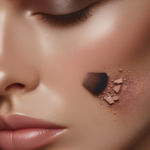If you’re tired of dealing with the discomfort and irritation caused by razor burns, then look no further! In this article, we’ll share some valuable tips to help you prevent those pesky razor burns from ruining your shaving experience. From choosing the right razor to practicing proper shaving techniques, these simple yet effective tips will leave your skin feeling smooth and irritation-free. So, let’s get started on your journey towards a painless and enjoyable shaving routine!
Choosing the right razor
Opt for a single blade razor
When it comes to choosing a razor, opting for a single blade razor can be a game-changer. Multiple blade razors may seem more efficient, but they can actually increase the likelihood of razor burns and irritation. Single blade razors provide a closer shave with less irritation, as they don’t pull or tug on the skin like their multi-blade counterparts.
Consider an electric razor
For those looking for convenience and quick shaving sessions, an electric razor might be the perfect choice. Electric razors are known for their ability to minimize irritation and reduce the risk of razor burns. They work by lifting the hair away from the skin, allowing for a smooth and comfortable shave. Additionally, electric razors can be used on dry skin, making them a great option for people with sensitive or easily irritated skin.
Use a sharp blade
No matter what type of razor you choose, using a sharp blade is essential for a smooth and irritation-free shave. Dull blades can pull on the hair follicles and lead to painful razor burns. Be sure to replace your blades frequently to maintain optimal sharpness. Investing in high-quality blades is worth it when it comes to achieving a close shave without any irritation.
Prepping the skin
Exfoliate before shaving
Exfoliating your skin before shaving helps remove dead skin cells and unclog pores, allowing the razor to glide smoothly. Use a gentle exfoliating scrub or brush to prepare your skin for a clean shave. This step reduces the likelihood of razor burns and ingrown hairs, leaving your skin feeling smooth and healthy.
Take a hot shower or use a warm towel
One of the best ways to prepare your skin for shaving is to take a hot shower or apply a warm towel to your face. The heat and steam help soften the facial hair, making it easier to shave. This not only reduces the chances of razor burns but also provides a more comfortable shaving experience overall.
Apply a pre-shave oil
Consider adding a pre-shave oil to your routine to further protect your skin from irritation. Pre-shave oils create a lubricating barrier between the razor and your skin, allowing for a smoother glide and reducing the risk of razor burns. Apply a few drops of the oil onto your face and massage it in before applying shaving cream or gel.
Using proper shaving technique
Shave in the direction of hair growth
Shaving against the direction of hair growth may seem like it provides a closer shave, but it’s a common cause of razor burns and irritation. Instead, shave in the direction of hair growth to minimize the strain on your skin. This technique ensures a clean shave while reducing the risk of ingrown hairs and razor bumps.
Avoid applying too much pressure
Many people have the misconception that applying more pressure while shaving results in a closer shave. However, applying excessive pressure can lead to razor burns and cuts. Let the weight of the razor do the work, and glide it gently over your skin. Using proper technique and avoiding excessive pressure will help you achieve a smooth shave without any skin irritation.
Rinse the razor frequently
Throughout the shaving process, make sure to rinse your razor frequently to remove any hair, shaving cream, or oil that has accumulated. A clogged razor can cause irritation and uneven shaving. Rinse the blade thoroughly under warm water and tap it gently against the sink to dislodge any trapped debris. Keeping your razor clean ensures a smoother and more comfortable shaving experience.
Moisturizing and aftercare
Apply a moisturizer after shaving
After shaving, it’s important to replenish and hydrate your skin. Applying a moisturizer helps soothe any potential irritation, nourishes your skin, and promotes its recovery. Look for a moisturizer specifically formulated for aftershave use, as these often contain soothing ingredients like aloe vera or chamomile. Gently massage the moisturizer into your skin to lock in moisture and keep your skin feeling soft and supple.
Avoid using alcohol-based aftershaves
While traditional aftershaves may provide a cooling sensation, many contain alcohol, which can be harsh and drying on the skin. Alcohol-based aftershaves can further irritate freshly shaved skin and exacerbate any razor burns or inflammation. Consider opting for alcohol-free alternatives, such as soothing balms or lotions, for a gentler post-shave experience.
Use a cold compress if needed
If you happen to experience significant irritation or razor burns after shaving, a cold compress can provide immediate relief. Simply wrap an ice pack or a clean cloth soaked in cold water around the affected area for a few minutes. This will help reduce inflammation and soothe the skin. However, if the irritation persists or worsens, it’s advisable to seek medical advice from a dermatologist.
Avoiding common irritants
Stay away from scented shaving products
Scented shaving products may smell delightful, but they often contain artificial fragrances that can irritate the skin. These fragrances can cause allergic reactions or heightened sensitivity, leading to razor burns and other forms of irritation. Opt for unscented or fragrance-free shaving creams, gels, and soaps to minimize the risk of skin irritation.
Avoid using too many products at once
While it can be tempting to pile on different skincare products before, during, and after shaving, using too many products at once can overwhelm your skin and increase the risk of irritation. Stick to a simple routine with a cleanser, shaving cream, moisturizer, and aftershave (if needed). This minimalist approach allows your skin to breathe and reduces the chances of razor burns or other adverse reactions.
Choose fragrance-free and gentle skincare products
Not only are scented shaving products potentially irritating, but other skincare products you use in your routine can also contribute to razor burns. Opt for fragrance-free and gentle skincare products to minimize the risk of irritation. Look for labels that indicate products are dermatologist-tested or suitable for sensitive skin. These products are formulated with gentler ingredients and are less likely to cause skin irritations.
Treating razor burns
Apply aloe vera gel
Aloe vera gel is known for its soothing properties and can be a fantastic remedy for razor burns. After shaving, apply a generous amount of aloe vera gel to the affected area. Its cooling sensation will provide instant relief, while its moisturizing properties will promote healing and reduce redness. Repeat the application as needed until the irritation subsides.
Use over-the-counter hydrocortisone cream
If razor burns are persistent or particularly uncomfortable, over-the-counter hydrocortisone cream can be effective in reducing inflammation and soothing the affected area. Hydrocortisone cream contains anti-inflammatory properties that can alleviate the redness, itching, and swelling associated with razor burns. Follow the instructions on the packaging and apply the cream sparingly to avoid further skin irritation.
Consult a dermatologist if the burn persists
If razor burns persist despite trying various home remedies or over-the-counter treatments, it may be time to seek professional help. A dermatologist can provide personalized advice and recommend prescription-strength treatments to address persistent razor burns. They can also evaluate your skin and offer guidance on shaving techniques or alternative hair removal methods that may be better suited to your skin type and sensitivity.
Maintaining razor hygiene
Clean and sanitize your razor regularly
Maintaining proper hygiene when it comes to your razor is essential in preventing skin irritation and infections. After each use, thoroughly rinse your razor under warm water to remove any hair or debris. Consider using a soft brush to gently clean the blades and ensure they are free from buildup. To sanitize your razor, you can soak it in rubbing alcohol for a few minutes, or use a store-bought disinfectant specifically designed for razors.
Replace blades frequently
Using dull or worn-out blades not only increases the risk of razor burns but can also lead to nicks, cuts, and overall ineffective shaving. It is important to replace your razor blades regularly, ideally every 5-7 shaves or when you notice signs of dullness. Fresh, sharp blades ensure a clean and smooth shave while minimizing skin irritation and discomfort.
Store the razor in a dry area
Proper storage of your razor is often overlooked but can greatly impact its longevity and cleanliness. After each use, thoroughly dry your razor and store it in a dry area. Avoid leaving it in a damp environment, such as the shower, as moisture can promote bacterial growth and blade corrosion. Storing your razor properly not only maintains its hygiene but also ensures a more pleasant shaving experience free from irritations.
Consider alternative hair removal methods
Explore waxing or sugaring
If you find that shaving consistently leads to razor burns or irritation, exploring alternative hair removal methods may be worth considering. Waxing or sugaring are popular options that remove the hair from the root, providing longer-lasting results compared to shaving. These methods can be done at home or by a professional and can help reduce the frequency of shaving, minimizing the chances of razor burns and irritation.
Try using depilatory creams
Depilatory creams, also known as hair removal creams, offer a pain-free alternative to shaving. These creams work by chemically breaking down the hair, allowing you to wipe it away easily. However, it’s important to choose a depilatory cream specifically formulated for sensitive skin to avoid any potential adverse reactions. Patch test the cream on a small area of your skin before applying it to a larger area to ensure compatibility and minimize the risk of irritation.
Consider laser hair removal
For those seeking a more permanent solution to unwanted hair and persistent razor burns, laser hair removal may be an option to explore. Laser hair removal uses concentrated beams of light to target the hair follicles and inhibit future hair growth. This process can gradually reduce hair growth and significantly decrease the occurrence of razor burns. However, it’s important to consult with a licensed professional to determine if you are a suitable candidate for this procedure and to understand the potential risks and benefits.
Dealing with sensitive skin
Test products before use
If you have sensitive skin, it’s crucial to test new shaving products before incorporating them into your routine. Apply a small amount of the product on a patch of skin and observe for any adverse reactions or irritation. Testing products beforehand helps you identify which ingredients or formulations your skin reacts to and allows you to tailor your shaving routine accordingly.
Avoid shaving too often
Frequent shaving can lead to increased skin irritation, especially for those with sensitive skin. To prevent razor burns, consider shaving less frequently and letting the hair grow out slightly between shaves. This approach gives your skin a chance to recover and reduces the risk of irritation caused by repetitive shaving. Experiment with shaving intervals to find the balance that works best for your skin.
Opt for hypoallergenic shaving products
When dealing with sensitive skin, opting for hypoallergenic shaving products is a wise choice. These products are specifically formulated to minimize the risk of allergies and irritation. Look for labels that indicate hypoallergenic or suitable for sensitive skin when selecting shaving creams, gels, and aftershaves. Choosing hypoallergenic options reduces the chances of razor burns and helps keep your skin happy and healthy.
Seeking professional assistance
Consult a dermatologist for guidance
If you consistently struggle with razor burns and have not found relief through self-care strategies, it’s beneficial to consult a dermatologist. Dermatologists are skin experts who can evaluate your specific skin condition, identify any underlying issues, and recommend personalized treatments and preventive measures. From prescribed medications to professional guidance on shaving techniques, a dermatologist can provide invaluable assistance in managing and preventing razor burns.
Consider professional waxing or laser hair removal
If you prefer a hands-off approach to hair removal or have ongoing issues with razor burns, professional waxing or laser hair removal might be worth considering. These professional services are performed by trained estheticians or dermatologists, ensuring expert care and minimal risk of irritation. Professional waxing removes hair from the root, providing longer-lasting results, while laser hair removal can significantly reduce hair growth over time.
Get expert advice on personal shaving techniques
Visiting a barbershop or a salon that offers shaves can provide valuable insights into proper shaving techniques. Barbers and stylists are experts in the field and can provide guidance on razor selection, shaving angles, and post-shave care. By seeking expert advice, you can learn personalized tricks and tips to optimize your shaving routine, reduce the chances of razor burns, and ensure a smooth and comfortable shave every time.
Remember, each individual’s skin is unique, and what works for one person may not work for another. It’s important to listen to your own skin, pay attention to its reactions, and adjust your shaving routine as needed. By choosing the right razor, prepping your skin, using proper shaving techniques, moisturizing and caring for your skin, avoiding common irritants, treating razor burns effectively, maintaining razor hygiene, considering alternative hair removal methods, dealing with sensitive skin, and seeking professional assistance when needed, you can say goodbye to razor burns and achieve a clean and comfortable shave every time. Your skin will thank you.




